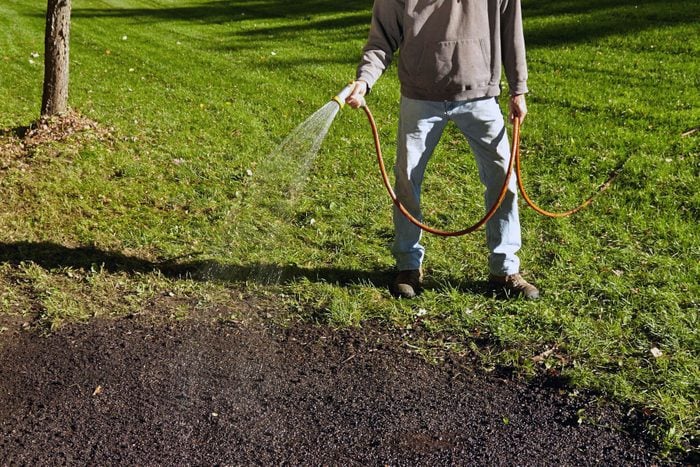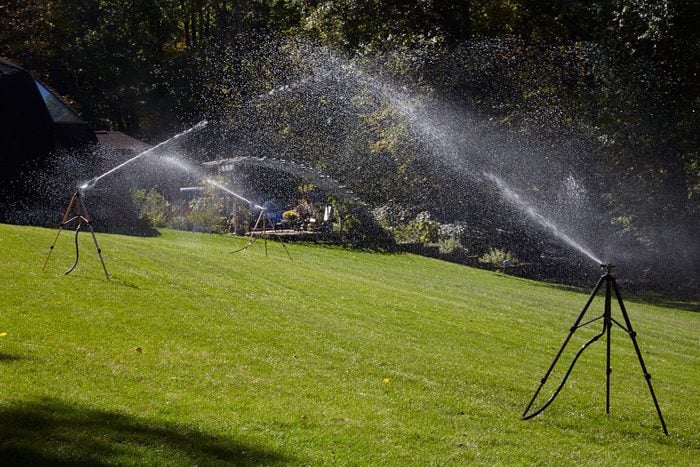Water restrictions can be tough on lawns, especially during hot summer months. If you’re looking for ways to keep your lawn green without violating local water regulations, you’re not alone. With the right techniques and drought-smart strategies, it’s possible to maintain a healthy, green lawn even during dry spells. Here’s how to keep your lawn lush while conserving water.


One of the best long-term solutions is planting drought-tolerant grass. These varieties require less water and can survive dry conditions better than traditional grass types.
Some popular drought-tolerant grasses include:
Bermuda Grass – Excellent heat and drought tolerance.
Buffalo Grass – Very low water needs and ideal for warm climates.
Zoysia Grass – Dense, slow-growing, and drought-resistant.
Fescue Varieties – Good for cooler regions with less rain.
If you’re starting a new lawn or considering an upgrade, switching to a drought-resistant variety can significantly reduce water usage.
One of the key rules to keep lawn green during water restrictions is to water less often but more deeply. This encourages the roots to grow deeper into the soil, making the lawn more resilient to drought.
Tips for smart watering:
Water early in the morning to minimize evaporation.
Use a sprinkler system with a timer for consistent watering.
Apply water slowly to allow absorption and prevent runoff.
By focusing on deeper watering sessions 1-2 times a week instead of daily light watering, your lawn will retain moisture longer.
The way you mow can also impact your lawn’s ability to withstand dry conditions. Raise your mower blade to leave grass slightly taller (about 3 inches). Taller grass shades the soil, reducing water loss and promoting deeper root growth.
Also, leave grass clippings on the lawn (mulching). They act as a natural mulch, helping retain moisture and providing nutrients as they break down.
Healthy soil holds water more efficiently. To boost your lawn’s water retention capacity:
Aerate the soil at least once a year to allow better water and nutrient penetration.
Add organic compost to improve soil texture and moisture retention.
Use mulch around the edges and in garden beds to reduce evaporation.
Good soil structure is essential for eco-friendly lawn care and can help reduce water dependency.
M
In extremely dry conditions, water may not penetrate the soil effectively. Lawn wetting agents (also called soil surfactants) help break the surface tension, allowing water to soak deeper into the soil where roots can access it.
These products are safe and can be applied easily with a hose-end sprayer. Use them once or twice a season for best results.
Modern irrigation systems use technology to optimize water usage. Smart controllers adjust watering schedules based on weather forecasts, soil moisture, and plant needs.
Consider:
Drip irrigation systems for precise, low-volume watering.
Smart sprinkler controllers that work with Wi-Fi and weather data.
Rain sensors to avoid unnecessary watering during or after rain.
These systems help you comply with water restrictions while maintaining a green lawn.
If maintaining a large lawn during water restrictions is challenging, consider reducing the turf area. Replace unused or hard-to-maintain lawn sections with:
Native plants or shrubs
Decorative stones or gravel
Ground covers like clover or creeping thyme
Drought-resistant landscaping (xeriscaping)
Less turf means less water, lower maintenance, and still a beautiful yard.
Always stay updated on your local watering regulations. Many municipalities allow watering on specific days or during certain hours. Set up reminders and use timers to ensure compliance.
Breaking the rules can result in fines, and over-watering during restrictions is unsustainable. Responsible watering is part of smart, eco-friendly lawn care.
Conclusion: A Green Lawn with Less Water Is Possible
Keeping your lawn green during water restrictions requires a combination of smart planning, efficient watering, and sustainable practices. By choosing drought-tolerant grass, improving soil health, and using modern irrigation tools, you can maintain a vibrant, green lawn even during the driest months.
Small changes lead to big savings—not just for your water bill, but for the environment too.


